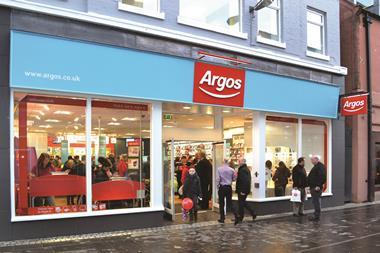Several retailers have signed up to a bank data-driven marketing service. Retail Week takes a closer look.
Why are we talking about this now?
Retailers including Morrisons and Argos have signed up to a service that targets offers based on consumers’ bank data. The service, provided by analytics firm Cardlytics, will be provided in partnership with Lloyds Bank to Halifax customers. It launches in September.
How does it work?
The retailers who have signed up – which also include Pets at Home and Ocado – will pay for access to the transactional history of consumers and are generating marketing offers based on that. They will be able to see which consumers spend with their competitors and will have access to postcode data enabling them to provide location-based offers.
The advertisements will appear on the side of online and mobile banking statements. They will appear for any customer at Halifax that gave marketing permissions when they opened their bank account allowing third parties to access data.
What’s in it for the retailers?
The service gives retailers access to data that will help them paint a picture of where their customers spend when they are not in one of their stores. They will be able to see who is spending with their competitors and who in a particular postcode could be targeted to up their spending or frequency of visits. The data will be anonymous and won’t offer any details beyond a shopper’s postcode. Cardlytics says it will work with retailers to decide the right offers for their shoppers.
Will customers respond well to this?
There may be concerns at first about privacy, but Cardlytics says consumers are comfortable with the service if the offers they’re receiving are useful. The company already works with around two thirds of the top 100 US retailers, where it says shoppers have responded well.
What else is happening in this area?
It is difficult to know until other services are launched, but banks such as HSBC and payments processors including Visa have access to huge volumes of data on how and where people shop. Some are planning to offer access to this data, as well as the analytics engines needed to make sense of it, to retailers whose own data volumes aren’t as good. The data is attractive to retailers because it gives a more holistic picture of where people shop.
What needs to be considered?
The service needs to adhere to the Data Protection Act and retailers will need to consider whether they use the data on its own or in conjunction with their own customer information. The introduction of the service may also need to be carefully managed to make sure there’s no backlash from consumers.


























No comments yet